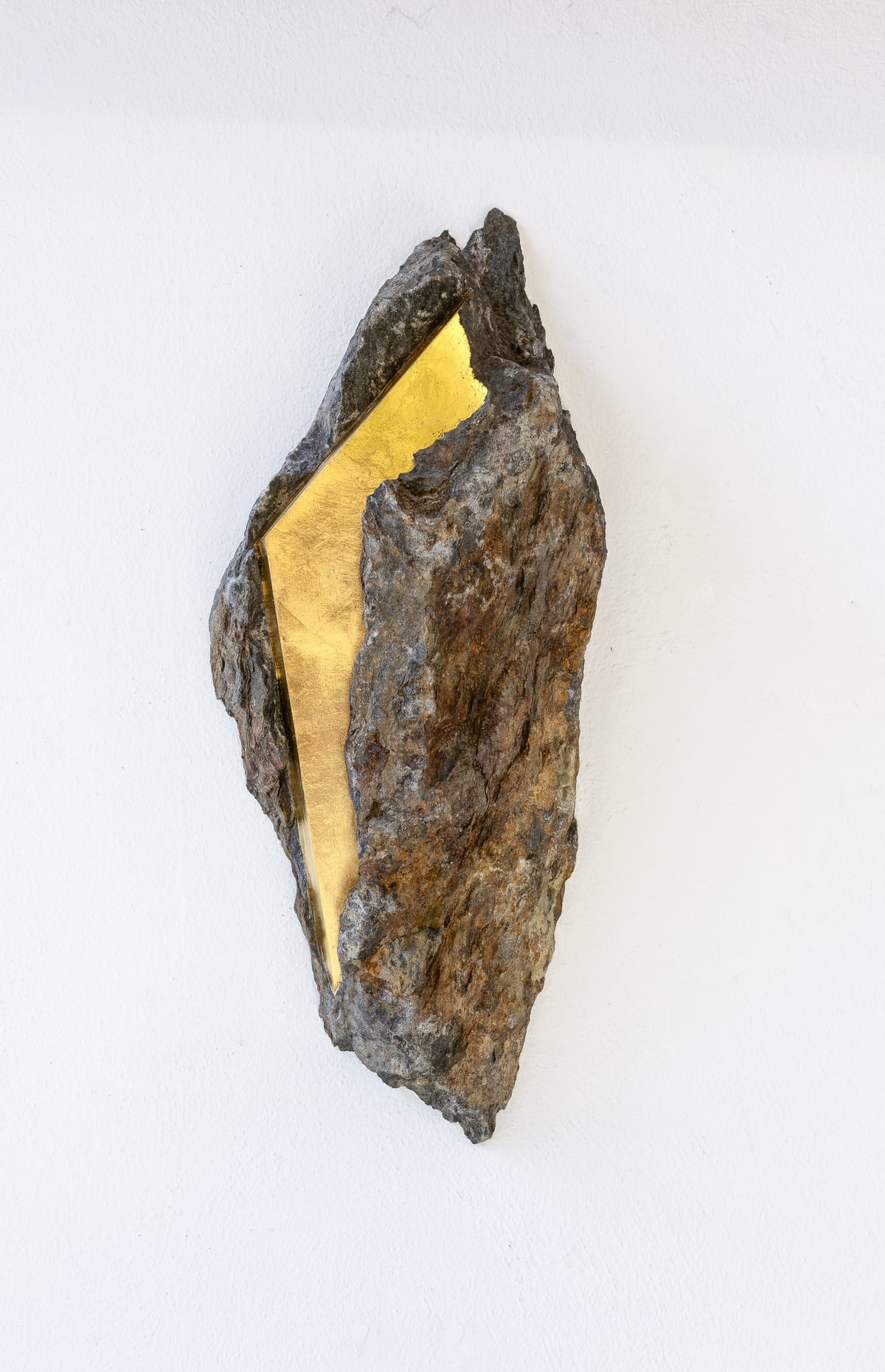Mattia Bosco
Gow Langsford is proud to present Italian sculptor Mattia Bosco’s first solo exhibition in Aotearoa. Born into a family of artists in Milan, Bosco has a background in classical studies and philosophy. He began working in ceramics before shifting into stone, which has become his primary medium. This exhibition focuses on two main bodies of work, wall-mounted Sezione Aurea (Golden Sections), and Kórai – a series of human-scale freestanding sculptures that reinterpret traditional goddess statues from the Greek Archaic period (700-500 BC).
Bosco has a deep affinity for stone, often sourced from the Val d’Ossola mountains of Piédmont close to his home. In selecting which stones to work with, Bosco looks for complexity in the surface of pieces discarded from the quarry; he comments, “I look for the small fragments that resemble the ridges of the mountain”. Bosco often selects marble with prominent natural veins, a method of making time – geological time – visible. A stone’s inherent qualities are integral to the artist’s understanding of the medium – its history, density and resistance to his touch or tools. He begins carving what he views to be the most expendable parts of the stone, seeing his interventions as a collaborative act with the material, a “meeting between two pieces of the world that are collaborating in an interplay of forces”. Areas of each work are always left untouched as Bosco’s process is one of listening to the material and allowing it to guide him in how it wants to be worked. For him, form and material and inseparable.
Gow Langsford is proud to present Italian sculptor Mattia Bosco’s first solo exhibition in Aotearoa. Born into a family of artists in Milan, Bosco has a background in classical studies and philosophy. He began working in ceramics before shifting into stone, which has become his primary medium. This exhibition focuses on two main bodies of work, wall-mounted Sezione Aurea (Golden Sections), and Kórai – a series of human-scale freestanding sculptures that reinterpret traditional goddess statues from the Greek Archaic period (700-500 BC).
Bosco has a deep affinity for stone, often sourced from the Val d’Ossola mountains of Piédmont close to his home. In selecting which stones to work with, Bosco looks for complexity in the surface of pieces discarded from the quarry; he comments, “I look for the small fragments that resemble the ridges of the mountain”. Bosco often selects marble with prominent natural veins, a method of making time – geological time – visible. A stone’s inherent qualities are integral to the artist’s understanding of the medium – its history, density and resistance to his touch or tools. He begins carving what he views to be the most expendable parts of the stone, seeing his interventions as a collaborative act with the material, a “meeting between two pieces of the world that are collaborating in an interplay of forces”. Areas of each work are always left untouched as Bosco’s process is one of listening to the material and allowing it to guide him in how it wants to be worked. For him, form and material and inseparable.
In the series Sezione Aurea, thin sections of marble appear to have gold emanating from within. These vary from subtle edges to bolder planes of light. History, form and light resonate as gold leaf accentuates the carved areas of each work. Bosco comments, “Like stone is time in solid form, gold is light in solid form.” The works were exhibited at the Piazza del Duomo in the Tuscan Town of Carrara, a city long associated with the processing of marble from the neighbouring Apuan Alps. This is where Michelangelo sourced the stone for his sculptures, with Bosco responding to this legacy by using marble from the Michelangelo quarries.
Each sculpture in Bosco’s Kórai series is carved from a different type of marble and is titled accordingly. Kóre – Portovenere Portoro (2023) is made of marble from the Gulf of La Spezia, Italy. The marble takes its name from the French term porte d'or, which means ‘golden door’, for the golden veins that run through the intensely black marble. In Roman times Portoro marble was often used to decorate imperial villas. For each work in this series, Bosco’s first act of transformation is to anthropomorphise the works, standing upright that which originated as a horizontal piece of stone. His work from then on is abstract in nature, finding balance between concept and form, philosophy and materiality.
Presented as a site-specific installation in 2023, the Kórai series were originally hosted inside the Tempio di Venere e Roma (Temple of Venus and Rome), located between the Colosseum and the Roman Forum. Arranged in a circle, the figural sculptures evoke the sense of a ritualistic dance of ancient memory, made from coloured marbles from all parts of the Roman Empire. As a contemporary revisitation of ancient Greek statues, they could represent vestals, Danaïdes, nymphs or muses – nine in number, just like the divinities of classical mythology.
Bosco’s work has been exhibited both publicly and privately throughout Italy and wider Europe. He has exhibited in renowned institutions such as Museum Tinguely in Basel, the Frieze Sculpture Park in London, the Triennale Design and Art Museum in Milan and the Diocesano Museum in Milan. After earning several artist residencies and awards, in 2015 Bosco was invited to the TEDxVicenza TED talk in Italy and since 2020 has also been involved in managing the contemporary art residency Casa degli Artisti in Milan.


























